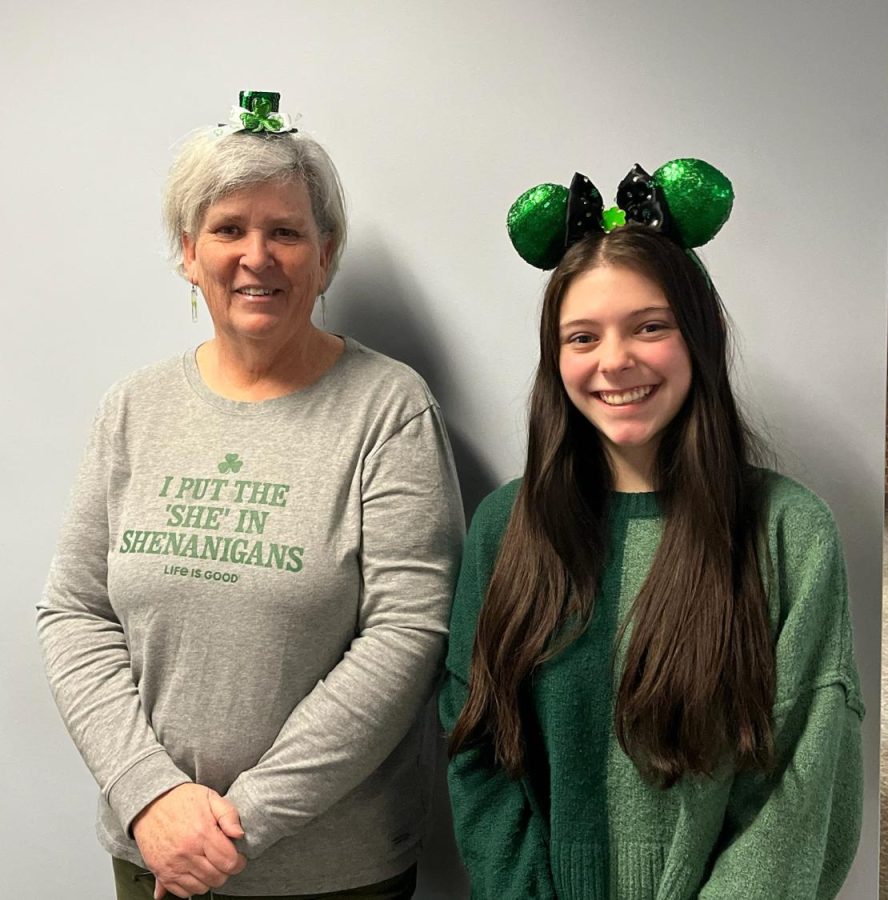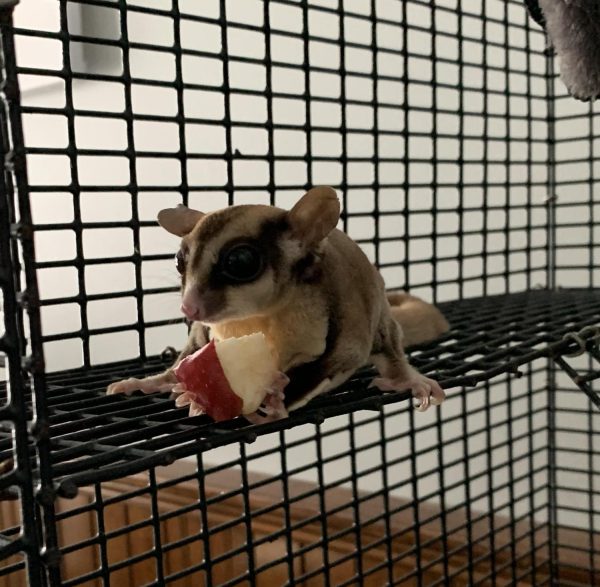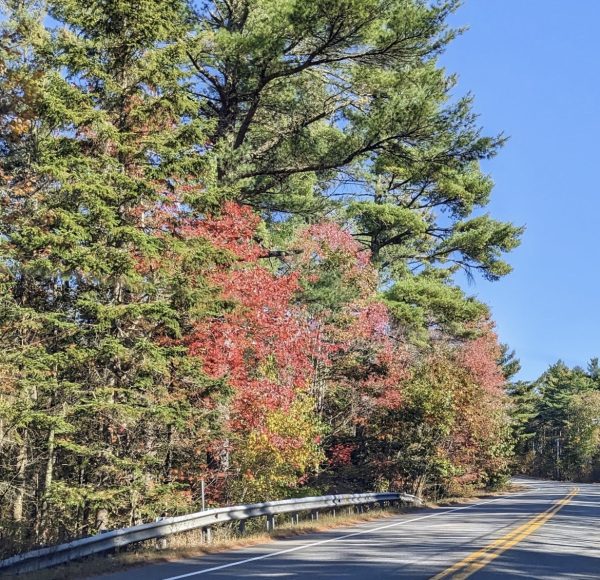An Irish take on St. Patrick’s Day at Oakmont
Ms.Mac and Ms.Feeley all dressed up on St. Paddy’s Day!!
An Irish Oakmont take on St. Patrick’s Day
By Julia Feeley
Do some families have a tradition for St. Patrick’s Day? Whether it be setting leprechaun traps or getting chocolate gold coins in the morning, St. Patrick’s Day is a holiday many families celebrate, even if it’s small. But where did the national phenomenon start? Was it always a holiday where people wore green and ate gold coins? Well, no, not always.
There is no real correlation between leprechauns and St Patrick’s day. But most cultures associate the leprechaun mainly because the idea originated in Ireland. These mystical creatures are considered good luck when spotted in Ireland. But according to lore, leprechauns pinch anyone not wearing their favorite color, which right now happens to be green.
What’s the GREEN all about?
Aside from not wanting to be pinched by a leprechaun, there are many reasons people wear green on St. Patrick’s day.
According to Readers Digest, one of the reasons comes from the nickname the “Emerald City” that Ireland has. Another is from the green stripe on the flag. The green stripe on the flag represents all of the Catholics in Ireland, while the orange one represents all of the Protestants, while the white stripe is the middle ground between the two. One of the religious reasons that green is the staple color is that St. Patrick used green three-leaf clovers to teach about the holy trinity.
The old color of St. Patrick’s Day, which is not so common anymore, was blue. It stopped being blue when Henry VIII assumed the throne and crowned himself king of Ireland, which made it an official part of England in 1541. But over time, people started to hate the arrangement that was set, so they started to use green as the color of Ireland
How do people at Oakmont celebrate?
I talked with Ms. McLoughlin, or Ms. Mac, in the guidance office to get some background on how they celebrate St. Patrick’s day in Ireland.
Big surprise, most traditions we have are not as big in Ireland. The famous corn beef and cabbage that is commonly eaten on St. Patrick’s day is not actually eaten in Ireland. They actually eat boiled bacon and cabbage. There are also no leprechauns or pots of gold. Over in Ireland, they have a religious day off to honor the day that St. Patrick chased the snakes out of Ireland. Many people go to church and nobody dresses all up in green.
Mrs. Therrien commented on how St. Patrick’s day in the U.K. is similar to America, with wearing green and eating green food, but it’s not as dramatized. Oakmont student Nola Patty said that she celebrates in the usual American way. She said that she dresses up in green and gets together with her family to eat corn beef and cabbage.
Ms. Bergin, who lived in Ireland for a time, said the bigger Irish cities host parades, but most of the people who attend the parade have young children or are tourists.
Mr. Caouette shared some interesting information and history about St. Patrick’s Day in America. The first thing he shared was about how the modern-day parades are around. The first Irish parade was in 1601 in St. Augustine Florida, the parade was organized by an Irish Vicar named Ricardo Artur. The next parade didn’t happen until 1772 in New York. A group of homesick Irish soldiers serving in the English Military marched to honor St. Patrick. After that, many cities started to celebrate with a parade. Nowadays, there is a big modern parade in New York City – that tradition started in 1848, and New York holds the record for celebrating St. Patrick’s Day with a parade for the longest time. Another thing that Caouette said was that 23 US Presidents have claimed to have Irish heritage, and many of them are traceable.

Julia Feeley is part of the Oakmont Class of 2026. This is her third year being a part of The Oakmonitor Club. She is doing select choir, Best Buddies,...








